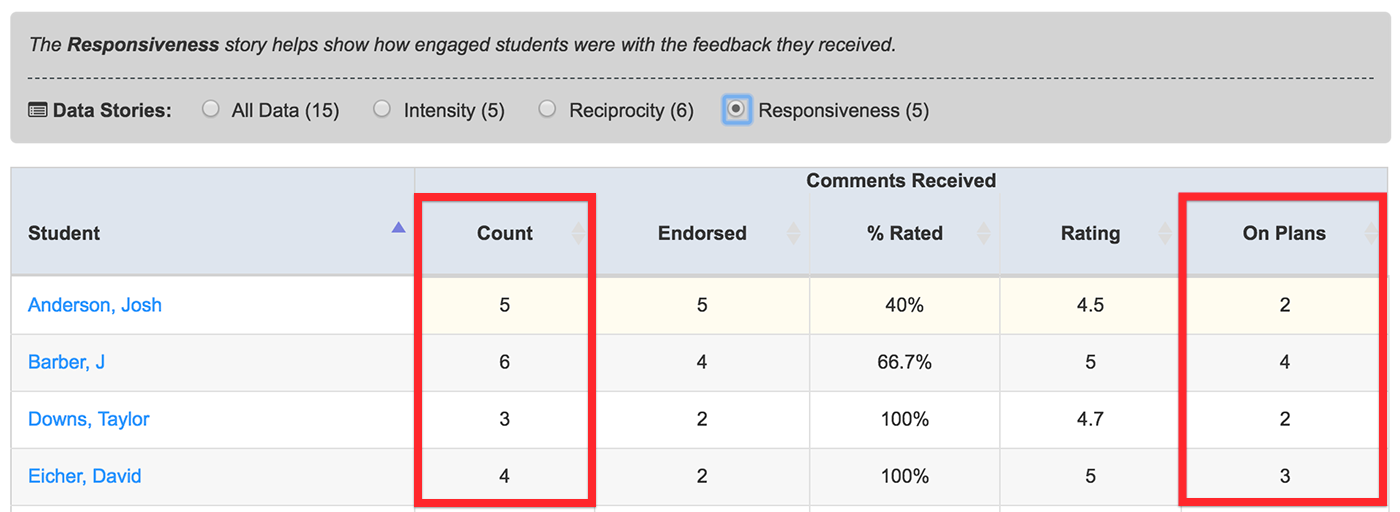Students revise using far less feedback than they receive. Pay attention to writer’s uptake so that you can encourage more and better uptake in the future.
How do you pay attention to uptake?
In Eli Review, you can use the responsiveness data story to notice uptake trends. In any review task, click on the Engagement tab, then choose the responsiveness data story.

The quickest way to find an uptake problem is to click on the header for “add to revision plans” and sort the column from least to most. Figure out why some writers are adding fewer comments to their plans than their peers by clicking on the writer’s name to read through the feedback they received.
What do you do about uptake problems?
Uptake problems usually indicate other problems. Read the feedback writers did not add to their revision plans to suss out what’s going on. To change the uptake patterns, you are likely to take these next steps.
Unteach the feedback sandwich.
Often, a revision suggestion is tucked in the middle of praise, like a feedback sandwich (Berger, Bressler, Cambell, 2014). Blinded by the praise, writers don’t notice the critique, or they decide that revision isn’t necessary because the praise is robust.
In this case, your next step is to teach reviewers to separate praise and criticism in their comments in order to make a clearer case for revision. Reviewers could even add #praise and #critique to their comments to make their purpose clear.
You can also teach students how to hedge or give them sentence templates for phrasing their suggestion in a kind, clear way.
Coach the writer in accepting feedback.
Some writers struggle to hear any critique at all. Some writers refuse to puzzle through confusing feedback, refusing to interpret what the reviewer meant. Some writers give up when they receive conflicting feedback.
All of these reactions are perfectly normal, and writers need to hear that these reactions are, in fact, typical. They also need to hear that their reaction does not stop revision. Have a conversation with individual writers or with the class about how to do the emotional and cognitive work of accepting feedback, even when it is confusing or conflicting.
Give writers permission to ignore feedback.
Some writers get feedback that they don’t want to use, which looks like an uptake problem but isn’t. Affirm writers’ choices to ignore feedback. If you are also assigning a revision plan, writers can justify leaving some peer feedback off of their revision plan in the additional revision note space.
Mind the gap between the feedback students receive and use to revise to improve peer learning success.



